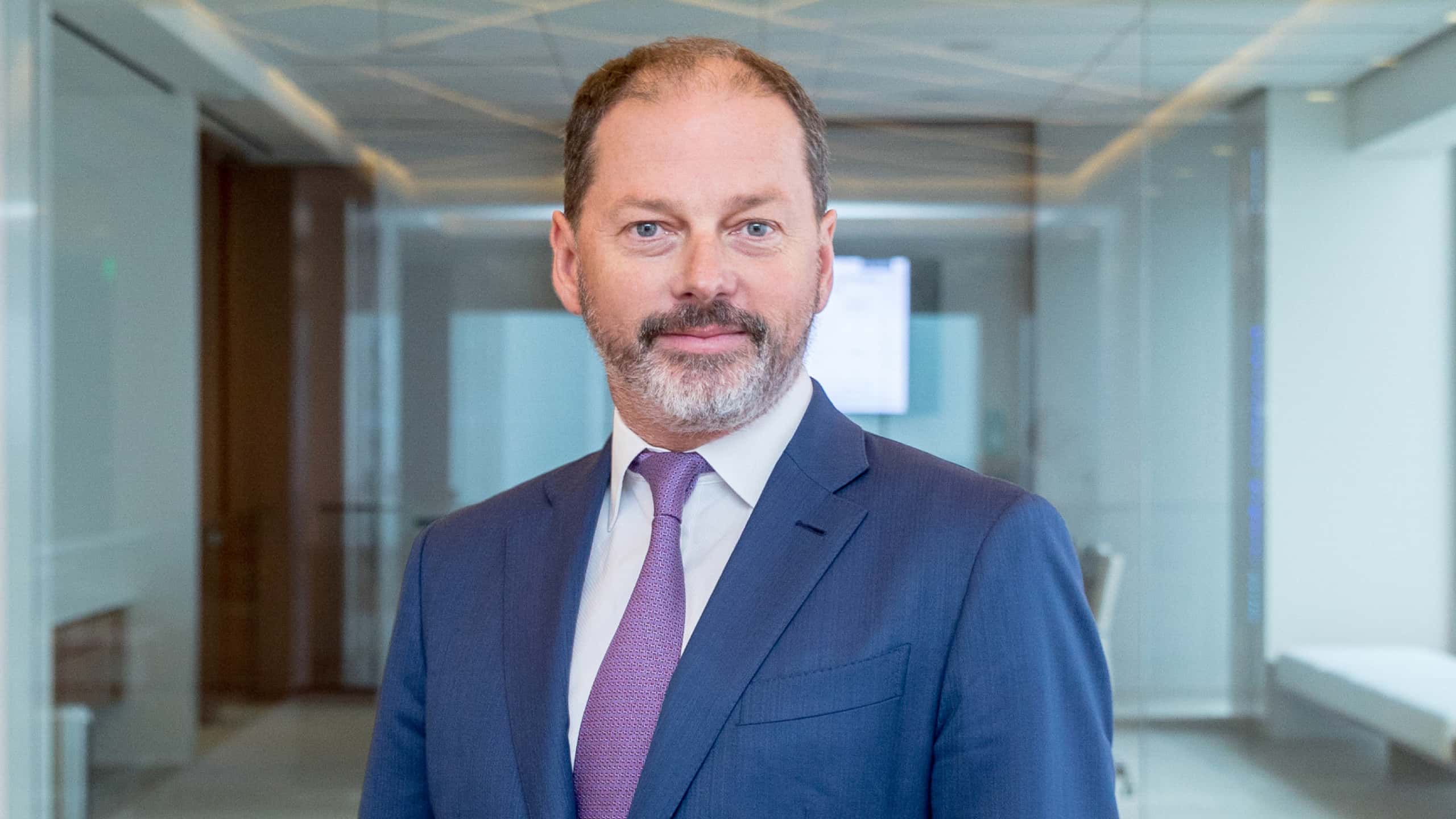Text on Screen: David Orazio, Account Manager
Orazio: Hi, and welcome to this month's Trade Floor Update. Today I'm joined by portfolio manager Rob Mead. Rob, thanks for joining us today. It's been an interesting time in markets of late. Volatility has spiked, and there's even been talk of a recession. What's PIMCO's view on this?
Text on Screen: Rob Mead, Head of Australia, Co-Head of Asia-Pacific Portfolio Management
Mead: It's a really interesting time. That's for sure. I guess the US data is somewhat consistent with a slowing economy, especially after the exceptional growth of 2023.
The more interesting thing is that the market reaction to a small miss in terms of economic data is more reflective of a market that's got a very risk-on stance. And even a small disappointment, something that's not quite Goldilocks has led to this incredible repricing over a very short window.
We do think this volatility is likely to continue, which means investors need to be really thinking ahead around portfolio construction, thinking ahead about anchoring their investment views. Because we think that's really key when we look forward.
Just last week we had everyone focused on Australian CPI and whether or not the RBA would be hiking this week. Fast forward a week and we've found that the RBA is more inclined to hike rather than cut. And we do think, given that stance, we are going to have to wait until at least late October when we get another CPI print in order to give the RBA comfort to do anything in terms of adjusting their policy settings.
I guess the good news is that while rates remain restrictive, every month that goes by and the RBA doesn't adjust the policy rate, it's still impacting the real economy. Every month household savings get eroded. Discretionary spending decisions get adjusted. So when we get to that point, when we do see the next CPI print, we think the economy will have slowed a little further.
Speaking of anchoring, as we've mentioned for a very long time now, we do think a cash rate of 4 to 4.5% is sufficient to slow the economy and bring inflation back into the target range. So we stick with that view very strongly and we still also stick with the view that the next move in the RBA policy rate will be a cut.
Orazio: Now, against this backdrop, how should investors be positioning their asset allocation?
Mead: So it comes back to the risk starting point and, as we know, a lot of Australian investors are quite risk on. Which means that the role for bonds in a portfolio is probably more compelling than ever, whether that be for portfolio defense, whether that be for income generation, whether that be for diversification or even for liquidity. We think all those factors are really, really important right now. In fact, as you know, we've spent a good part of the last 12 months trying to debunk a whole range of different myths that have somehow propagated around the market and I think there's at least four things for investors to think about and act upon.
So the first one is that waiting for the first rate cut doesn't make any sense. And that's because markets move well in advance. So as soon as data starts to deteriorate, the rate cuts will start to be priced and eventually central banks will act. So every time we catch up for one of these sessions, we name the next central bank that just cut rates. So this time we can talk about Bank of England. Next time we'll be talking about the Fed.
Second thing is volatility like this should remind investors that diversification’s not dead. And one of the things we do know is that as inflation comes back into the target range, the power of diversification becomes even more compelling.
And so as we are starting to move in that direction, investors should be really focusing on how well they're diversified. And in that regard, using Aussie bank Tier 2 or hybrids floating rate as your defensive asset is just a fallacy. They're not defensive assets. When you really need protection in a portfolio, that's not what you're going to get from a fairly risky floating rate instrument. You need to own fixed rate core bonds.
And the final thing is that starting yields are the most important drivers of bond returns. And we know that over 3 to 5 years, 95% of returns in a bond are explained by the starting yield. So given that we've moved from a cash rate of ten basis points to 4.35%, we're still there, we do think now remains a very compelling time to be adding bonds to a portfolio.
Orazio: Great. Thanks for your insights today, Rob. Now, as you've just heard, the recent market volatility has reinforced fixed income’s role as a powerful and valuable diversifier in portfolios.
With elevated yields, cash rates at their peak and inflation moving back towards central bank targets, we think the outlook for fixed income is very attractive and investors should be leaning into this opportunity to build resiliency in their portfolio.
If you have any further questions or would like additional information, please reach out to your PIMCO account manager or visit our website.

